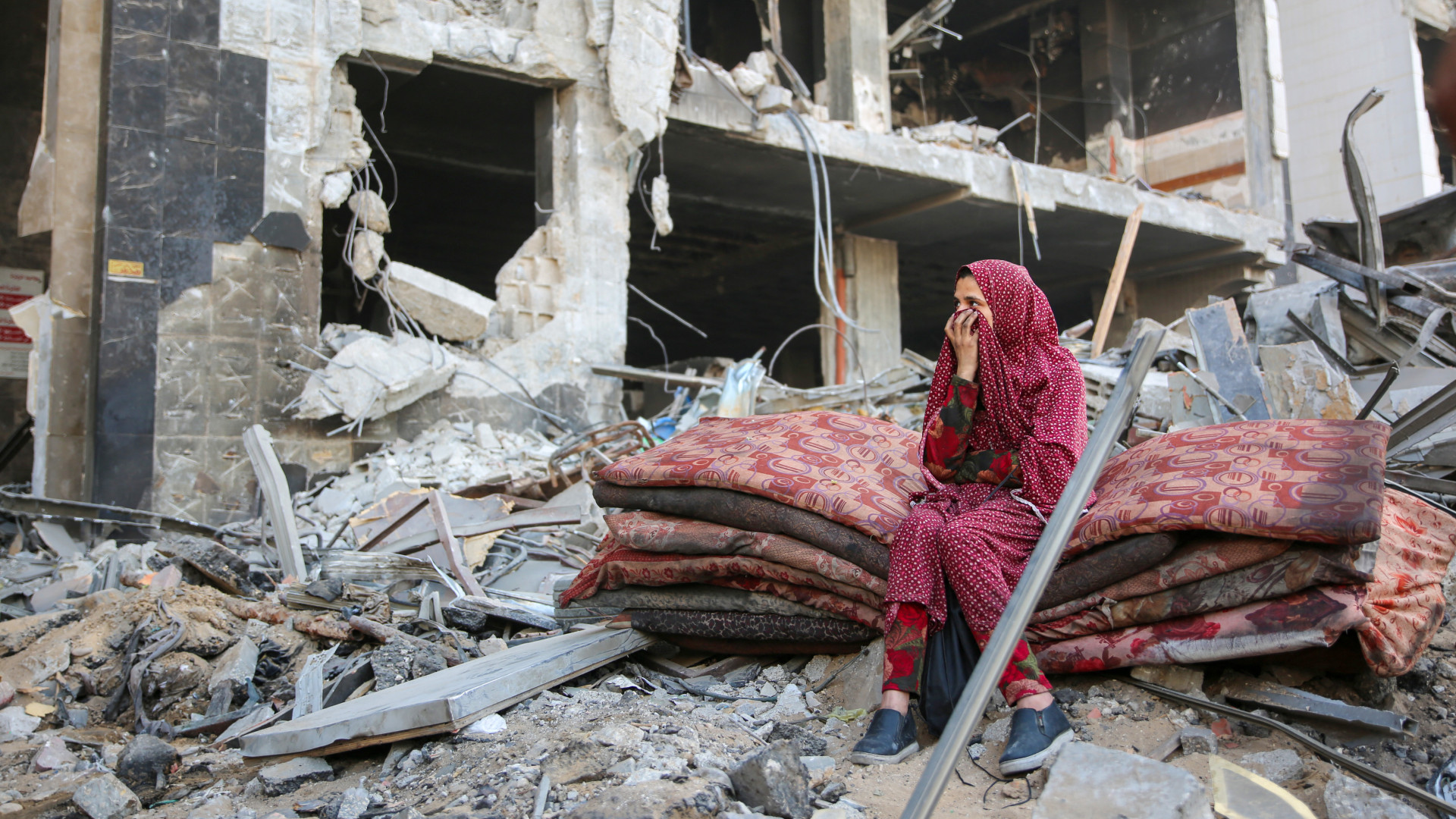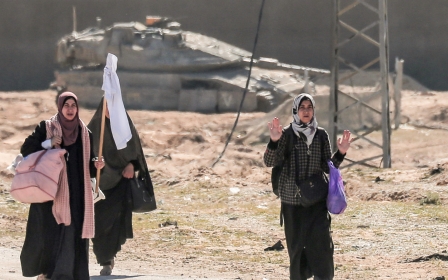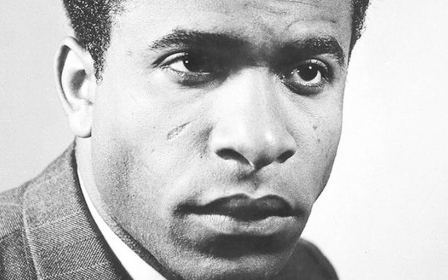For Israel's TikTok serial killers, there is a pleasure in inflicting racial terror in Gaza

The scene of genocide is often that of the victim of naked violence who is utterly dehumanised by a state of incarceration, violation, dismemberment, starvation, and torture.
In Gaza, the images are unceasing, gripping you in inescapable despair - mutilation, rotting corpses, family annihilation, bags full of body parts of loved ones, bereaved fathers in states of anguish, traumatised, dying and starving children, mothers crying out in desperation - nightmarish snippets of the growing magnitude of loss taken from apocalyptic scenes in the 21st century.
There is no scarcity of images of the horrors unfolding - Palestinians are offering visuals to the world of their genocide, but every day, there is a new level of brutal criminality. And no image or institutional words - "terrorism", "war", "human rights violations", or even "genocide" - can adequately capture the depths of these atrocities, or enable us to comprehend them. Nor should they.
In the absence of accountability, these scenes are instead provocations - committed, direct affirmations - that send a message to the world that this is a power where no law dares speak.
Worse still, we are judged as hopeless and pathetic before the biggest mass murder of our times.
New MEE newsletter: Jerusalem Dispatch
Sign up to get the latest insights and analysis on Israel-Palestine, alongside Turkey Unpacked and other MEE newsletters
Our shock, horror, and grief are castigated as accusatory indictments of antisemitism, sympathy for terrorism and, in the case of many already highly policed and surveilled communities, criminality.
Staging the crime scene
But while Palestinians desperately document their genocide, there is another scene that possesses you by its sheer depravity: the broadcasting and display of enjoyment of Israelis in that violence.
The transgressive staging and voyeuristic witnessing have a self-validating effect. With callous indifference to the injuries inflicted, Israeli soldiers share with us their disturbing desire to continue to dominate the now-empty homes of displaced, possibly dead, Palestinians.
Intruding upon and exposing their private world in gleeful abandon, Israeli soldiers flaunt women's underwear on walls, military vehicles, and on their own bodies, playfully caressing the nipples.
With callous indifference to the injuries inflicted, Israeli soldiers share their disturbing desire to continue to dominate the now-empty homes of displaced, possibly dead, Palestinians
The lack of shame in these images - from the embarrassing TikToks of awkwardly dancing Europeans cosplaying as Indigenous freedom fighters to the blatant theft from reluctantly abandoned homes - is as crass as it is unsettling.
Shame would suggest there is an audience that witnesses and judges. Who are these soldiers presenting themselves to? Who is meant to watch them? This is a complicated question because if this is a show of power, who is it for?
Week after week, Israeli officials make media appearances with a tone-deaf demand to be seen as the victim.
Meanwhile, ordinary Israelis on social media have expressed the vilest racism we attribute to the early 20th century, giggling as they admit their desire to kill Palestinians, if not outright murder them.
We have become unwilling onlookers to these shocking pleasures in racial terror that the history of serial killing, from slavery and Jim Crow to colonial military and torture campaigns, have long ago witnessed.
In this perverse history, when faced with opposition, the terror that was inflicted on subjugated communities had to be total.
Colonial fantasies
In 1492, as he was bringing the armada of the inquisition to the Global South, Christopher Columbus described the earth as a breast with the equator as its "nipple" - the peak closest to heaven.
Colonial writing is riddled with such erotic feminised descriptions of lands imagined spread out, ready to be discovered and conquered by male exploration.
European men travelled to "the East" to rediscover how to be men without limits. Race and gender intersect in this colonial fantasy of mastery.
Follow Middle East Eye's live coverage of the Israel-Palestine war
Identifying the gendered dimensions of colonialism's cultural and political output, the Palestinian writer Edward Said described how it imagined itself as a masculine force by projecting a sexualised and "feminine" Orient for penetration and possession.
Pillaging as they violate and jeer their way through the lives they most likely have exterminated or who undoubtedly fled for a safety that has yet to arrive, Israeli soldiers intrude and perform their aggression in the same way.
The colonial robbery and pornographic incitement marks historical scenes of colonial unveiling - entering the colonial harem, lifting the veil from Muslim women's bodies, and penetrating flesh. It harks back to histories invested in bodies staged by a colonial will for mastery over worlds and peoples.
In French-occupied Algeria, Frantz Fanon observed how, in her attire, the veiled woman blocked the colonial gaze and denied its mastery over land and bodies. This provoked in the coloniser a maddening, insatiable desire to discover and conquer the margins and expose what was hidden.
Both enthralled by and anxious about the unseen, French authorities staged public "unveiling" ceremonies of Algerian women to uncover their mysteries, reveal what they were hiding, and demonstrate Algeria's cultural and political submission to France by castrating and humiliating Algerian men.
Fanon's observations in occupied Algeria brought together the struggle over knowledge as one entangled in violence, pleasure, and racial terror.
Decades later, in Palestine, the colonisers remain settled, excavating and embedding themselves in the land, extracting it for perpetual titillation and self-discovery.
Gaza is being reversed to a colonial designation of "empty land" by way of the final stage of settler colonialism, as the scholar Ahmed Paul Keeler reflects, accelerating the violence in death, destruction, and displacement.
Yet, as Anne McClintock observes, the colonial map is a technology of knowledge that claims a scientific truth about land. But the blank spaces and edges of the map that mark the limits of knowledge abound with paranoia, where monsters, mermaids, beasts, and cannibals threatened to cross.
In the frenzied ferocity from Israel in Gaza after its imagined national borders were violated on 7 October 2023, is this not the fear of boundary crossing and contamination? The dangers of the margins? The rage in its existence?
Writing about racial terror, the anthropologist Michael Taussig argues that there is an excess in colonial violence that no economic, military or political objective can fully explain.
The terror inflicted is its own purpose.
Dangerous Muslim men
For the Israeli and western publics to centre violence and moral injury around 7 October, they must circumvent not only a history of apartheid and occupation in Palestine but also the ensuing atrocities. This is justified by racist ideas grounded in histories of Orientalism and Islamophobia about Arab and Muslim masculinity.
Consider the highly gendered theme of the Israeli soldiers' perverse displays, along with the repeated accusation of mass rapes on 7 October.
Pop-up protest theatre has appeared in western cities with supporters of Israel wearing pants stained with fake blood on their crotch as another depraved cosplay of the alleged rapes.
Appealing to and weaponising the white woman in peril as she's lusted after by Black, Arab and Muslim men who harbour violent sexual fantasies, these protests call on white men and their death industries to go to war for them.
Hamas is projected as a dangerous Muslim masculinity that cannot be engaged but only hunted down and eliminated. The bloodied crotch, as the only scene of the crime, overpowers not only the occupation but even the sexual violence against Palestinian women and girls by Israeli soldiers to authorise the vengeful hunt.
The repetitive stories of mass rapes, mutilated breasts, and beheaded babies invoke racist stereotypes of Arab and Muslims as misogynists and gruesomely violent and circulate because there is political purchase.
Therefore, the corrections and evidence demanded of papers like The New York Times, which commissioned a food writer to report on the story, misses the point.
The truth of what occurred that day is irrelevant to the story as there is an audience ready to receive such tales of barbaric and evil violence by Arabs and Muslims and their sexual deviancy.
It is the storytelling that matters and what imagination it triggers about the dangers of Muslim masculinities.
How else do we explain the cutting off of Unrwa funding by western nations without an investigation? Palestinian - qua Arab and Muslim - masculinity is seen as monstrous in these accusations, which persist because they are believable to western audiences.
The phobic dimension to these racist fantasies of dangerous masculinity should not be understated.
Unlike the romanticised masculinity of Ukrainians who oppose Russian invaders, Hamas's masculinity embodies not only the evil of Islamic State, the misogyny and gender apartheid of the Taliban, and the plotting skills of al-Qaeda, but Muslim political will as an aberration and incompatible with modern life. It is a will that, if not extinguished or committed to periodic bloodletting, through rituals of "mowing of the lawn", will rise up and put the West to the sword, a fantasy that Orientalist literature has long propagated about the existential threat that Islam poses.
The endangered white woman so central to the condemnation narrative against Hamas not only permits the hunt but sanctions the brutal violence by Zionist soldiers.
Insisting on the bloodied crotch - real or imagined - at a time when Israeli soldiers commit and wilfully document ugly, deviant, and cruel behaviour is as brazen as it is bewildering.
'Colonial psychopathy'
Beyond the sexual fetish for Palestinian personal items, as if to mock the kinky world of Muslims, other displays of malice and deviancy are made available.
In countless videos, Israeli soldiers are seen performing brown and black face, mocking tortured and displaced Palestinians, and taunting starving Palestinians by burning or stealing their food and cooking it in their abandoned kitchens, imitating a cooking show.
As they film themselves looting, rummaging through personal lives, digging for and extracting the intimacies of Palestinian life, there is something cannibalistic in this need to consume everything about the enemy other.
The soldiers' mocking, revelling, and gleeful faces are reminiscent of the murderous maniacs or demonic archetypes in horror films, stalking their victims with morbid pleasure.
Typical of serial killers, there is an omnipotence - a colonial psychopathy - present in these faces and the brazenness of the crime. But in serial killing, the shedding of blood is rarely enough. The need to secure trophies as a masturbatory tool to relive the violence becomes a perverse compulsion.
It is therefore no coincidence that social media has been put to its wicked service as it offers serial killers a return to the scene of the crime and facilitates the fantasy of total mastery over the victim - that is, to murder again and again.
While the refrain "every accusation is a confession" has become popular among Palestine supporters who recognise Israeli claims as a projection of their own crimes in Gaza, the repetition of this tale of violence may evoke in the perpetrator the secret pleasure of returning to the crime scene.
The lurid visual record of Israeli soldiers' crimes against Palestinian women presents a sharp departure from the western narrative of waging war in the name of "saving" Muslim women. Indeed, the Israeli update to this formula returns to the brutish nature of its motive: Muslim women were never to be saved but used as human shields from any condemnation that can expose the wolf-like barbarism of western liberal democracies and their desire for mass murder.
Masculinity and western cultural wars
Broadening the political scope, what do these overt displays of gendered and racial power mean at a time when the West's culture wars are dominated by a perceived crisis of masculinity?
Israel, a country that claims to be under threat by a hostile Arab and Muslim world, has thrown down its own gauntlet into the cultural battlefield.
In the present culture wars, aggrieved men across the political and cultural spectrum who did not feel they had a place in the contemporary western world have turned to salvation figures like Jordan Peterson, Andrew Tate, and a growing online culture of defensive masculinity.
It is not conspiratorial to appreciate how the unleashing of violence against Gaza after 7 October reasserts the colonial boundaries and returns the culture wars to the racial line
In its war against the "radical left" and its perceived cultural assault on the family, the alt-right had, in recent years, begun to look to Islam and the ideals of Muslim masculinity as a resolute defence against these forces. Responding to the praise for a "white sharia", the emerging Muslim manosphere signalled a new appetite by some Muslim men to unite around the defence of traditional masculinity.
But where would this have left Israel, which had long seen itself as embattled and competing with violent European masculinity and the fantasies of Oriental masculinity?
All national fantasies of racial supremacy are haunted by a shadowy margins where the fantasy dims, becoming less stable as its faced with its own limits - what psychoanalysis describes as castration.
For Israel, which has promoted itself as the exception - the "only democracy" in the Middle East’ with a superior security defence - castration appears in the possibility of replacement by the "Other" who can penetrate its defences and even galvanise its old allies in opposition.
It is not conspiratorial therefore to appreciate how the unleashing of violence against Gaza after 7 October reasserts the colonial boundaries and returns the culture wars to the racial line.
The Christian right in the US, which had solicited support from Muslims on a shared agenda of preserving the so-called "traditional family", reasserted its commitment to Israel against the Muslim hordes. Jordan Peterson has made clear his support for vengeance after Hamas' attacks, encouraging Israeli Prime Minister Benjamin Netanyahu to "give 'em hell".
For a post-9/11 generation of Muslim men, the so-called "crisis of masculinity" is a symptom of deeper political and economic grievances reduced to "culture talk" and a misdiagnosis to manage the antagonisms inherent in decades of violence.
In a familiar scene, groups of bound and blindfolded Palestinian men are stripped down to their underwear, huddled together, and seen as desperate to use other bodies as cover.
The war on terror perforates these images of brutalised and exposed Arab and Muslim flesh.
Other scenes also came flooding back: the torture at Abu Ghraib prison, Guantanamo Bay, Bagram prison, detention centres, rendition, and counter-terrorism raids.
In today's cultural landscape, where crises are performed, recirculating such images of dehumanisation not only re-establishes the racial line but continue to rationalise the disciplining of a Muslim political will.
Islamophobia's killing field
To draw out the wolf, are historical parallels to other scenes of subjugation even effective?
What is the political work of historicising violence? What are the ethics of repeating history's repetitive compulsions?
Remembering suggests we desire a perfect memory that will relieve us of our contemporary moment and give it stable meaning, but history has no conscience and is subject to the memories of others.
This century gives us enough history, however. Before the camps arrive, there are always words.
Decades of Islamophobia saw a perverse investment in the problematistion of Muslims as dangerous, violent, suspect, and misogynistic, priming us for this moment.
It has witnessed the ruthless nature of Islamophobia in a war on terror that had its own genocidal objectives to exterminate Muslim political will across the globe, where up to 4. 5 million people have died.
Vilified, detained, renditioned, tortured, droned, banned - the brutalisation of Muslim bodies or those made to be Muslim bodies has become common sense, thinkable, even expected.
While the pleasures of racial terror remain inexplicable, it is Islamophobia that sheds light on how a 21st-century public is consenting while witnessing, for six months, a genocide unfolding.
The views expressed in this article belong to the author and do not necessarily reflect the editorial policy of Middle East Eye.
Middle East Eye delivers independent and unrivalled coverage and analysis of the Middle East, North Africa and beyond. To learn more about republishing this content and the associated fees, please fill out this form. More about MEE can be found here.







